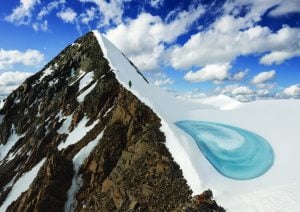Glacial retreat, shorter ski seasons and the decline of wild sheep populations: these are just a few ways in which alpine ecosystems and their watersheds are being transformed. And scientists are looking to the mountains as early warning systems precisely because they respond so rapidly — and intensely — to climatic and environmental shifts.
The sheer size, diversity and inhospitableness of these regions makes them notoriously difficult to study. That’s why the 2018 State of the Mountains Report is so valuable. This Alpine Club of Canada report, released on May 26, combines and distils the most recent scientific fieldwork, data modelling and photo evidence from a host of ecologists, geologists, hydrologists, climatologists and other researchers to create the clearest picture yet of how our mountain spaces as a whole are changing, and changing fast.
These are highly complex regions — hotbeds of species diversity criss-crossed by critical migration routes, but also wellsprings of Canadian culture and identity, recreation and economy covering more than a quarter of the country. And as the map below shows, many major rivers rise from the highest elevations, supporting ecosystems, communities and industries both near and far from their snowpack- and glacier-fed headwaters.
From the peaks to the Prairies and on, mountains affect us all. Read on for report highlights, and to find out more about the state of our mountains.










